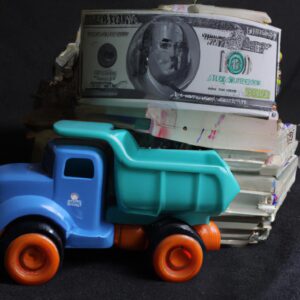Unveil the Latest Innovations: The Cultivated Insights of Toy Fairs & Trade Shows”
Introduction
Toy Fairs and Trade Shows are events that allow toy companies and inventors to showcase the newest and most innovative ideas in the industry. They have been around for centuries and have evolved over time into events that bring buyers, sellers, investors, and innovators together to view and purchase the latest developments in the world of toys.
Attending Toy Fairs and Trade Shows can be a great way to introduce new products to a large audience, meet potential buyers, and increase awareness of your brand. They are also an important platform for inventors to debut their products and investors to make strategic investments.
The purpose of this guide is to provide a comprehensive overview of Toy Fairs and Trade Shows including their history, benefits of attending, cost of participating, showcases, launching a product, connecting with the right people, generating interest, and evaluating results.
History of Toy Fairs and Trade Shows
Toy Fairs and Trade Shows have a rich and long history. As far back as the 19th century, toy makers have been showing off their creations at events like these. Initially, these shows were small and regional, focusing on local businesses. But as toy production evolved, so did the toy shows.
Toy Fairs and Trade Shows began to take a larger form in the 20th century as different parts of the country, and then the world became connected. International toy makers began to showcase their products and the latest innovations to an ever-growing audience. Today, Toy Fairs and Trade Shows have become a vital part of the toy industry, connecting buyers, inventors, companies, and consumers from all over the world.
These events have a huge impact on the industry, showcasing what’s new and driving innovation. They also provide a platform for networking and learning. Toy Fairs and Trade Shows give buyers, distributors, and investors the opportunity to connect with toy makers and inventors to find the newest items on the market.
Benefits of Attending Toy Fairs and Trade Shows
Attending Toy Fairs and Trade Shows can provide many advantages for toy companies, buyers, and inventors. By participating in these events, companies have the chance to showcase their newest products, find potential buyers, make connections with investors and partners, and boost the visibility of their brand. Toy Fairs and Trade Shows also offer a platform for inventors to show off their innovative products and potentially find buyers that can help make them a reality.
For buyers, attending Toy Fairs and Trade Shows can be a great way to discover upcoming products and find new suppliers. It is also a great opportunity to network with other entrepreneurs, industry professionals, and vendors, while gaining insight into current toy trends.
Inventors who attend Toy Fairs and Trade Shows can benefit from the direct feedback they get from potential customers, which can then be used to refine the final product. Participating in such events can also provide an ideal platform for making connections with industry professionals and potential buyers, gaining valuable exposure, and networking with potential partners or advisors.
The Cost of Participating
Toy Fairs and Trade Shows can be expensive for companies, buyers and inventors to participate in. Depending on the show, some costs to consider include designing a booth or stall, purchasing materials for display, paying for transport, shipping, and accommodation. A company will likely have to factor in the cost of staff being present at the event, too.
Exhibitors may be expected to pay fees upfront, depending on the type of package they choose. This could include pre-show promotions, access to the trade floor, or other services such as catering or photography. It’s also important to factor in the time and effort it takes to plan for a show, such as designing a presentation, creating marketing materials, and arranging transportation.
Showcases at Toy Fairs and Trade Shows
When attending a Toy Fair or Trade Show, standing out is key. Having an appealing and engaging showcase for your product can help to draw potential buyers, investors, and more. It is important to take the time to create a unique and impressive display that will grab people’s attention.
Think about what makes your product different and use it as the main focus of your showcase. Use eye-catching lighting, visuals and props to bring your theme to life. Take advantage of technology to enhance your display and provide interactive elements such as touch screens or virtual reality.
When creating your showcase, consider the layout and flow to create ease of navigation. This will help to ensure potential buyers can move around freely without feeling overwhelmed. Also make sure to include inviting seating areas, as these can be used to give presentations and provide more detail on your product.
It is also important to keep the overall goal of the showcase in mind. Make sure that it is representative of your product and brand, while also conveying the key messages you want your viewers to take away.
Preparing to Launch a Product
Before launching a product, there are several steps that toy companies must take to ensure that their product will be a success. This includes designing the product, product testing, and developing marketing materials and presentation. To illustrate this, let’s look at two case studies of products that launched successfully.
- Case Study 1: ABC Toys
ABC Toys designed a new type of stuffed animal that responded to children’s touch. Before launching the product, they conducted detailed product testing to make sure the toy was safe for children, while still providing an interactive experience. In addition to product testing, they developed product packaging, promotional videos, and sales materials to showcase the product.
- Case Study 2: XYZ Electronics
XYZ Electronics created a new type of interactive board game. Prior to launch, they tested the product extensively to make sure that it was both fun and challenging. They also created promotional videos to highlight the features of their product, as well as a comprehensive website to provide more details about the game.
These two case studies demonstrate the steps toy companies must take before launching a product. Designing the product, conducting product testing, and creating marketing materials and presentation can help make sure that the product is ready for launch.
Connecting with the Right People
Toy Fairs and Trade Shows are a great way to meet potential buyers, investors, partners, and advisors. But in order to make those valuable connections, you have to know how to effectively network. Here are some tips for making the most out of these events:
- Attend seminars and workshops targeted at your industry.
- Introduce yourself to people in related fields.
- Attend social events hosted by exhibitors.
- Follow up after the show with contacts made at the event.
Networking is a key part of Toy Fairs and Trade Shows. Making the right connections can help you launch your product faster and easier. So be sure to spend some time networking and getting to know people in your industry.
Generating Interest
When you’re attending a Toy Fair or Trade Show, it is important to make sure that your product or brand is noticed and remembered. One of the best ways to do this is by generating buzz and interest around your product before, during, and after the show.
Before the show, you should use social media platforms or dedicated email campaigns to get people excited about your product and showcase it in the best light possible. You could also contact influencers or bloggers to help spread the word about the product and get the conversation started.
During the show, it’s all about making a presence. Make sure the booth stands out with eye-catching visuals and memorable features that will attract people. Also, don’t forget to set up a way for potential buyers and customers to directly connect with you, such as a newsletter sign-up or an event hashtag.
Finally, after the show has ended, it’s important to keep the momentum going. Keep in touch with contacts made at the show, or post follow-up content about the product on social media. This will help keep it fresh in the minds of potential buyers and remind them of why they should consider purchasing the product.
Attending Toy Fairs and Trade Shows can be exciting, but it’s important to evaluate how the event went afterwards. After the event, you should measure feedback, interest, and sales. This helps you understand how successful the event was in achieving your goals.
You can measure feedback by collecting the opinions of visitors, exhibitors, and other industry professionals. Ask for their impressions of the show and the products showcased. This is helpful for understanding what can be improved for the next event.
It’s also important to measure interest in the products. Look at whether visitors stopped to look at the products, ask questions, or take a business card. This helps you understand if your showcase was effective enough to capture people’s interest.
Lastly, measuring sales after the event is essential for evaluating success. Consider how many units made it off the showroom floor, and if there was an increase in online orders. This allows you to see the tangible results from participating in the event.
By evaluating feedback, interest, and sales, you’ll be able to better understand how much success you achieved from attending the Toy Fairs and Trade Show. It’s an important step to help you reach your goal of showcasing the latest innovations.
Toy Fairs and Trade Shows offer a unique experience for exhibitors to showcase their latest innovations and creations. This guide covers the history of Toy Fairs and Trade Shows, their benefits, cost of participating and strategies for launching a product. It also discusses different types of showcases and how to generate interest before, after, and during the show. Finally, it offers advice on how to evaluate results and provides resources for additional information.
The history of Toy Fairs and Trade Shows dates back to the 19th century when toy companies would travel to various countries to exhibit their products. Over time, these events have grown into specialized exhibitions with a scope that includes everything from traditional toys to the latest technological developments.
Attending Toy Fairs and Trade Shows can provide numerous benefits for everyone involved. Exhibitors establish relationships with buyers, search for investors, find new partners and learn from other industry professionals. Buyers, inventors and suppliers have the opportunity to gain exposure, learn about future trends, and be at the forefront of new technologies.
Participating in Toy Fairs and Trade Shows can be costly, as there are fees for designing, displaying and exhibiting. However, the advantages tend to outweigh the costs, especially if exhibitors are prepared with the necessary materials. To make an impact, it is important to create a dynamic and engaging showcase. This could include experiential activities, interactive displays, and promotional videos.
When preparing to launch a product, it is essential to conduct research, test the product, design marketing materials and practice a compelling presentation. Connecting with the right people is key in order to find potential buyers, investors, partners and advisors. To generate interest, exhibitors can use social media campaigns or PR strategies.
After attending the event, exhibitors should evaluate the results by measuring the feedback, interest, and sales. Resources such as websites and digital newsletters can be extremely helpful for further research.
In conclusion, Toy Fairs and Trade Shows provide exhibitors with an opportunity to showcase the latest innovations and thrive in the industry. With a little bit of preparation and the right attitude, exhibitors can find success at these events and maximize the benefits of participating.
Resources
Attending a Toy Fair or Trade Show can be an exciting experience for anyone in the toy industry. Before attending an event, it’s important to research available resources that can give you detailed information about the event. Here are some of the top resources for Toy Fairs and Trade Shows:
- International Association of Exhibitions and Events (IAEE): IAEE is an organization dedicated to providing professional resources and networking opportunities for individuals involved in exhibitions, trade shows, and other events. IAEE’s website provides resources such as event calendars, case studies, and educational resources.
- Toy Industry Association (TIA): TIA is a global not-for-profit trade association providing resources such as market research data, legal resources, industry trends, and educational materials.
- Toy & Hobby Retailer Magazine (THR): THR Magazine is a publication featuring news and coverage on Toy Fairs and Trade Shows.
- ToyNews: ToyNews is an online resource dedicated to providing news and perspectives from Toy Fairs and Trade Shows.
Importance of Attending Trade Shows and Toy Fairs
Toy Fairs and Trade Shows are a great opportunity to showcase the latest innovations in the toy industry. Manufacturers, buyers, and inventors come together to discover and explore the newest products and ideas in the industry. Attendees benefit from meeting new contacts, building relationships, and gaining insight into their respective markets. Taking part in these events can be incredibly valuable for any company looking to grow and succeed.
Trade shows and Toy Fairs provide creators with an environment to demonstrate their work to potential customers. It is also an excellent opportunity to compare products and services of different companies. The investment in attending one of these events could pay off hugely, if the right contacts are made or the right products and services are showcased.
The cost of participating in a trade show or Toy Fair is an important consideration. It generally involves designing, displaying, and exhibiting at the event. This can be expensive and should be carefully planned out. However, the potential reward makes it worth the effort for many companies.
Making your showcase stand out among the competition is essential to getting noticed. It is important to create a memorable impression to ensure that people remember your brand and products. Sample showcases that have proved effective include demonstration displays, interactive elements, and engaging presentations. Furthermore, creating marketing materials, testing your product, and preparing a presentation before launching a product can be extremely helpful.
Networking and connecting with the right people is an invaluable aspect of attending these events. Buyers, investors, and partners can all be found at Toy Fairs and Trade Shows. It is important to take advantage of the opportunity to make connections and discuss collaborations.
Generating interest around your brand can help make the event more successful. It is important to create buzz before, during, and after the show. Social media is a great way to reach potential customers, as well as traditional marketing techniques like print media, radio, and television.
Once the event is over, it is important to evaluate the results. This can include measuring feedback, interest, and sales. This is a great way to determine if the event was successful and how to improve moving forward.
comments: 0





